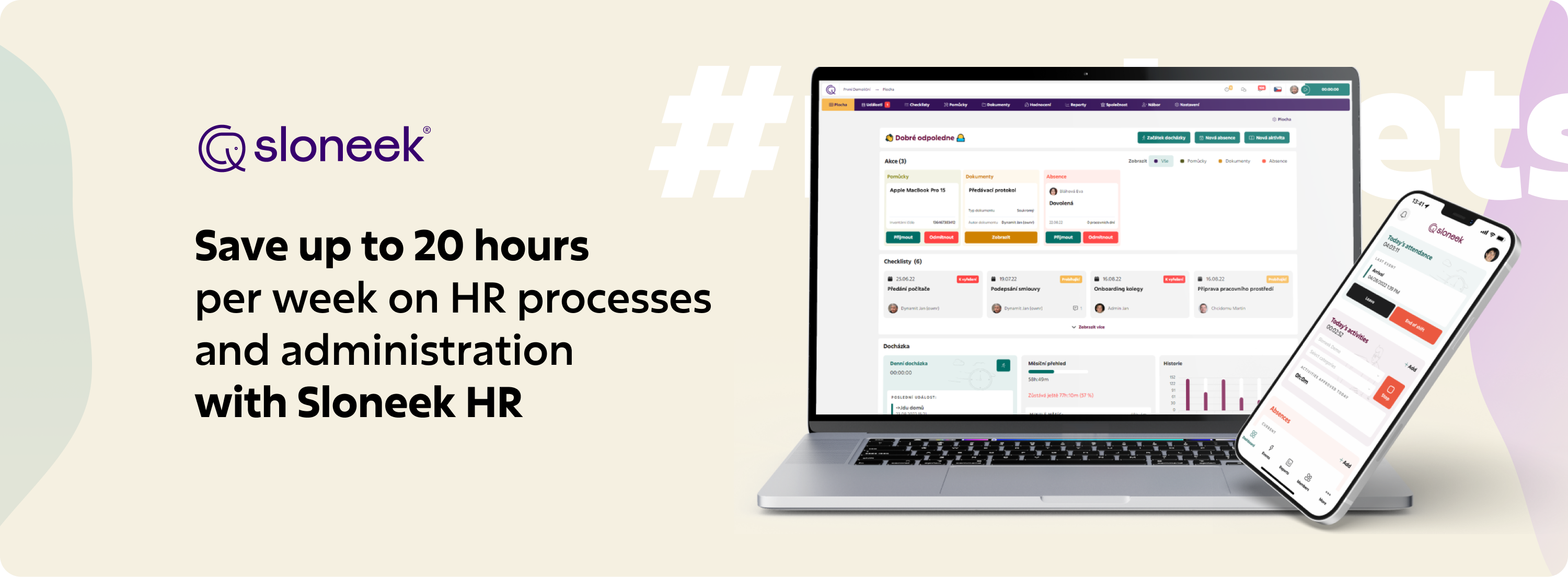7 Ways HR Can Master the Hybrid Workforce Game: It’s not a Yes or No, it’s all in the How!

According to a Pew Research survey, the “hybrid model”, which combines office and home-based work, is currently the most popular form of working model. And it’s probably where the future of the whole labour market lies, whether we want it or not. And no wonder. This flexible system allows employees to work from home for part of the week, saving travel time to work, while also encouraging team meetings and team building as employees physically commute to the office for part of the week.
Hybrid Work: Not Just for Millennials Anymore
If you anxiously resist the hybrid working model, you will pay the price. Not only will you be pitting employees against each other, but you will also be putting off many candidates for whom it is crucial and even commonplace these days. And it’s far from just the younger generation. Parents with children or elderly people also prefer a hybrid.
However, it’s important to note that successfully managing a hybrid workforce can be more complex than managing those who work exclusively in the office or remotely. Don’t underestimate the challenges, but with the right focus, you can make the hybrid model work for your company and keep your employees happy and productive.
👉 1) Set ground rules, follow them and remind them
To ensure a smooth transition into a hybrid work model, it’s essential to establish clear guidelines and rules. While working from home offers flexibility, it’s important to remember that it’s not a vacation or a sick day. To maintain productivity and efficiency, it’s crucial to balance work responsibilities both in the office and at home, taking into account the different tasks that may be better suited to each environment.
At the same time, everyone needs to know what is expected of them – so set personal expectations. Talk to your staff about their roles and responsibilities, the processes and scope of the work they do, the expected quality of their output, their working hours, deadlines and availability for meetings. Don’t assume employees already know everything – be thorough and ask them if there is any confusion that needs to be cleared up. Not listening enough to their people is one of the most common mistakes managers make.
👉 2) Communicate effectively
As the demand for quality and flexible communication in the hybrid model continues to rise, it’s essential to teach employees effective communication skills. For simple questions or quick updates, work chat tools such as Slack, Teams, or Whatsapp are ideal. There are also many similar available solutions to Slack, etc. However, for more complex issues that require detailed explanation, don’t waste time composing a lengthy email. Instead, leverage the efficiency of email marketing services lookinglion or consider recording a voicemail or scheduling a quick call to discuss the problem and find a solution in just five minutes.
A quick phone call can often be more efficient and effective, and conference calls can be easily expanded to include multiple participants. Additionally, when planning online meetings, consider who really needs to be present. Avoid scheduling unnecessary meetings and invite only those who have a direct stake in the discussion. By prioritizing productivity and respecting your colleagues’ time, you can ensure successful collaboration and positive outcomes.
In short: teach your colleagues to consider which channel is most effective for a given issue, information or advice. At the same time, don’t drown in a sea of channels. For example, you should agree to keep the number of chat apps to a minimum within your company. Do you work with colleagues via Whatsapp, Messenger, Instagram chat, iMessage, Telegram and Slack? Having multiple channels for one type of communication is detrimental, so use one or, at most, two chat platforms for an effective quick connection.
👉 3) Transparency, cooperation and respect for others
To ensure effective communication with colleagues who work from home, it’s crucial to establish their availability hours and communication boundaries. It doesn’t have to be to the minute, but some basic framework is important. If this information is not open and transparent, it may happen that a colleague doesn’t call you with a quick question because they don’t know if you are still working or if you are already “down”. And solving a task can therefore take up to another week.
Sloneek Tip: You can find a great and clear Working Hours functionality in our Sloneek HR system.
On the other hand, we should respect that colleagues working from home are concentrating and tackling tasks that they cannot concentrate on sufficiently in a collective. Therefore, we should not call with every little thing, but only when it’s really necessary. But this should also apply in an office.
👉 4) Trust your people. And verify occasionally
If you don’t trust your employees and you don’t have a trust-based company culture, then you’d better not even opt for any hybrid model, because it would end up stressing you and your employees out. The hybrid model is based on the principle of delegating some responsibility to the staff themselves. When working from home, there is no boss sitting behind their backs and their only watchdog is their own self-discipline. The relationship between you and your staff should be based on mutual trust. Employees should see you as a coach – someone who wants to help them succeed and work effectively – not as an adversary.
However, as the saying goes: Trust but verify. There should be a healthy balance between trust and occasional “checks”. Spying and checking programs are long past their sell-by date, so let them go right out of your head, otherwise you’ll become a micro-manager on your way to paranoia. However, what is particularly important when working from home is monitoring – time-tracking and recording specific tasks. It doesn’t have to be exact to the minute, but an employee, HR manager and boss should have an overview of what a person is able to do or not do during the working day. If a person doesn’t work as he/she should, you can usually tell right there. A smart HR solution enables clear time tracking, activity planning and time sheets for hours worked. All functions nowadays should also be fully accessible from a mobile phone.
👉 5) Master the art of team dynamics
When using the hybrid model, it’s very important to be in harmony as a team. If one-third of colleagues attend the office on Mondays and Tuesdays, another third on Wednesdays, and the final third on Thursdays and Fridays, the likelihood of the teams meeting is close to zero. Hybrid working arrangements must be set up in such a way that they do not jeopardise the company’s functioning and allow for healthy working relationships, which are difficult to replace when meeting exclusively online.
I recommend setting fixed days in the office and fixed work from home. This will keep the whole team in formation and unified – they will meet in the office on the same days and all the people will be at home on the same days. Especially in medium and smaller companies, it’s important that everyone in the office gets along. Because when there’s a lack of harmonisation, you can find yourself almost alone in the office. Then the question is why go there at all if you don’t meet the team. Which affects the collective motivation and, as a result, the team can gradually start to stagnate, which nobody wants.
With the right harmonisation, this worry is also eliminated for HR. “Straggling” colleagues have gotten used to HR being in the office whenever they are there, so they expect HR to be available whenever they need it. By dividing the working week in a fixed way, you also make it easier for the HR department.
👉 6) Digitise your HR work and bring it completely online
At the end of the previous point, I mentioned a situation where the HR department works partially online and partially offline – not only in the sense of the HR specialists themselves, but all HR work. However, this is not an ideal situation for effective work. The combination of paper documents, forms and binders on the one hand and a digitised HR documentation on the other can make your life a lot more complicated. Sure, it’s convenient for employees to deal with you online when they’re online and offline when they arrive at the office. This does not make your job any easier, because you have to keep two sets of documentation for both cases.
Therefore, think first and foremost about the efficient functioning of all HR work – if you fully digitise it, no one will lose anything. Colleagues are already used to dealing with forms, reports, attendance and trips online from home anyway, and this can be the case when they come into the office. You’ll have time to focus on more important things, like improving digital HR or competency models, and you can see your colleagues at lunch, in a meeting or in an urgent situation without someone constantly knocking on your office door with something that can be dealt with online.
👉 7) Provide the right tools and technology
Most remote work can be done with a computer, internet access and a phone. But sometimes there are other important tools, channels and resources that efficient work is hard to do without. We have already discussed communication platforms and time tracking tools. But it shouldn’t end there. They must be followed by:
- Online absence recording (and approval, if appropriate),
- company structure,
- smart reminders of dates and events,
- integration of spreadsheets,
- online trust box,
- 360° evaluation ,
- company notice board,
- employee surveys
- and many other functions. Sloneek actually has all these features, check it in our overview of all functionalities.
In short, everything we know from the offline world must run and function fully online. Working from home should not limit staff in any way compared to working from the office – for example, by lack of access to a work disk or to additional spreadsheets, tools or folders and programs. Of course, digital video conferencing tools such as Zoom, Microsoft Teams and Google Meet are available. For some workers, you may need to think about a small printer, an account at a local copy centre or postal and office supplies. Additionally, keeping all software up-to-date is crucial for smooth operations; for guidance on updating applications on a Mac, you can refer to this post.
Job Market Jungle: Stay Ahead of the Game and Win
After reading my tips, you may be a little dizzy and thinking that the hybrid model can be pretty complicated. I’d like to allay your fears. I think that if you follow these simple steps and collect regular feedback from your colleagues, you’re at least halfway there. The hybrid working model is already becoming a common and frequently used mode, and will become even more widespread as additional younger generations enter the job market. Resisting or rejecting it is therefore tilting at windmills.
Of course, there are disciplines where this is not possible. A tram driver, a baker or a nurse usually cannot work from home for logical reasons, but wherever possible, staff and applicants will expect or even demand it. If your company stubbornly refuses flexible working models even where there are no logical barriers to them, you may lose many existing and potential employees. And in today’s overheated job market, this is a really stubborn and unnecessary risk and is like cutting through the branch you are sitting on.





